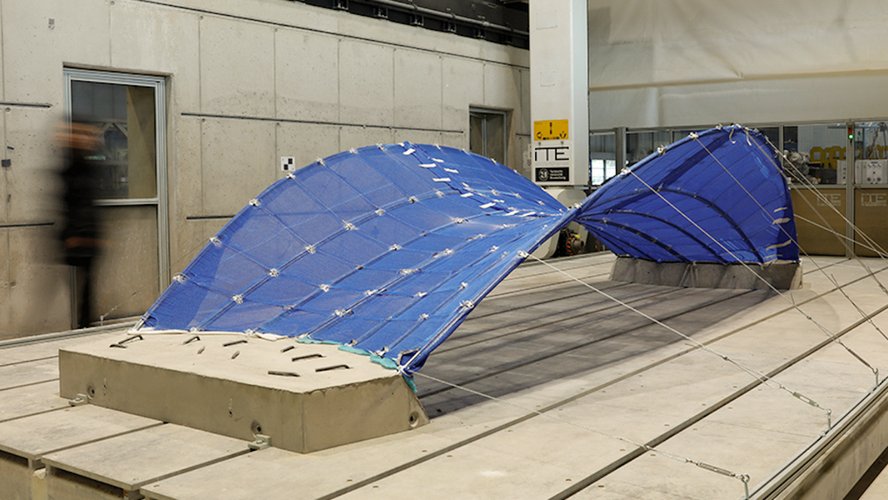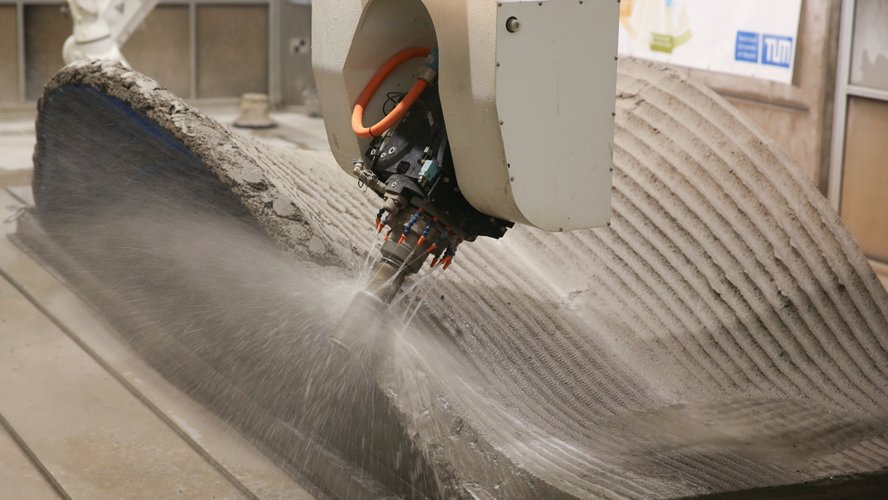KnitCrete Bridge
Project Team
N. Hack, P. Rennen, S. Gantner (Technische Universität Braunschweig, Institute of Structural Design)
P. D'Acunto, L. Bleker (Technical University of Munich, Professorship of Structural Design)
K. Dörfler, G. Dielemans (Technical University of Munich, Professorship of Digital Fabrication)
K. U. Bletzinger, M. Hojjat (Technical University of Munich, Chair of Structural Analysis)
M. Popescu, N. Christidi (Delft University of Technology)
R. Wüchner (Technische Universität Braunschweig, Institute of Structural Analysis)
D. Lowke, I. Mai (Technische Universität Braunschweig, Institute of Building Materials, Concrete Construction and Fire Safety)
Student Team
A. Kariouh, C. Zhou, E. Pestriakova, F. Chovghi, F. Wang, H. Liu, J. Sukhowerchov, N. Kovacs, P. Götz, R. Li, R. Pekuss, T. Schlinker, T. Sun, S. Pagés I Diaz, R. San Miguel
Sponsors
DFG (German Research Foundation) TRR277 Additive Manufacturing in Construction, Holcim Innovation Center
The research project aims to develop a design-informed manufacturing process for complex concrete shell structures in additive manufacturing and thus overcome limitations of traditional construction methods such as formwork- and labor intensity. To achieve this, an effort was made to merge the two technologies of CNC knitted stay-in-place formwork, known as KnitCrete, and robotically applied shotcrete, known as Shotcrete 3D Printing (SC3DP), and thereby reduce their respective limitations. The proposed workflow unites both digital fabrication methods into a seamless process that additionally integrates computational form finding, robotically applied fiber reinforcement, CNC post processing and geometric quality verification to ensure precision and efficiency. As part of a cross-university, research-based teaching format, this concept was implemented in the construction of a full-scale pedestrian bridge, which served as a demonstrator to evaluate the capabilities and limitations of the process. While overcoming some challenges during the process, the successful prove of concept shows a significant leap in digital fabrication of complex concrete geometry, reducing reliance on labor-intensive methods. The results make this fabrication approach a promising starting point for further developments in additive manufacturing in the construction sector.




